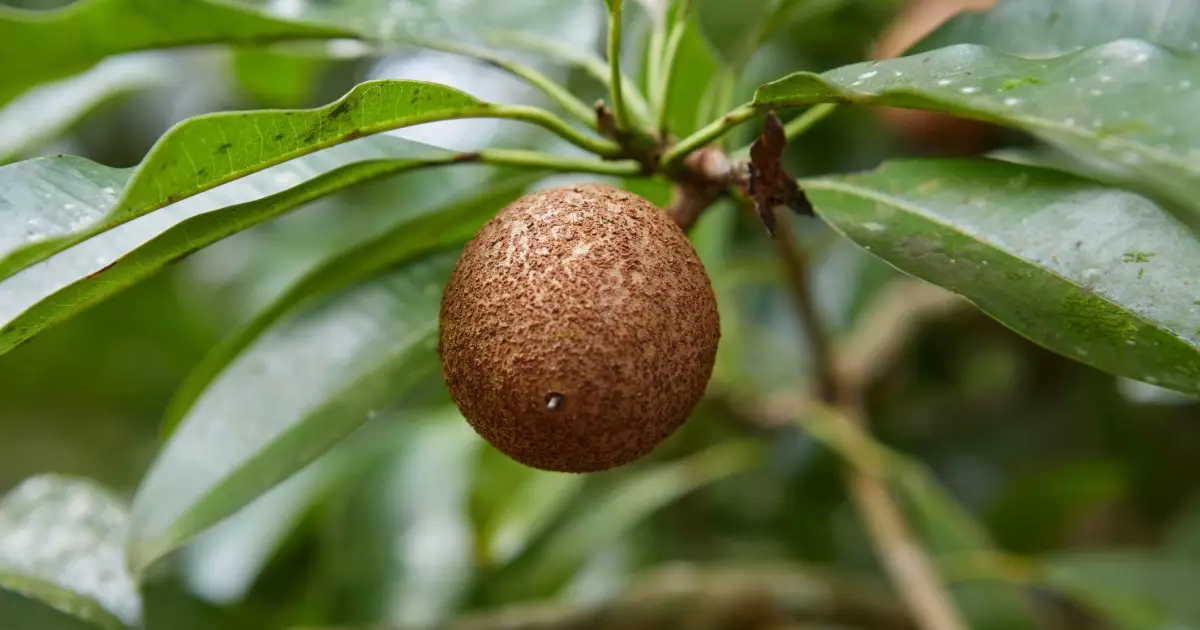Sapodilla, also known as chikoo or sapota, is an exotic fruit that hails from Central America and the Mexican tropics. While it may not yet have captured widespread popularity in the U.S., sapodilla deserves a place on your radar, especially for canine companions. However, as delightful as this fruit may be, introducing new foods into a dog’s diet always requires caution. The first step is familiarizing yourself with what makes sapodilla unique—its rich texture and sweet, mellow flavor offer a tantalizing experience for our furry friends.
Yet, sapodilla is sometimes mistaken for mamey, a fruit that bears a toxic risk for dogs. This confusion poses a significant concern, as the appearance between these two fruits can lead to potential health hazards. Consulting a veterinarian is crucial when considering adding sapodilla to your dog’s menu. Be vigilant, as ensuring that your pup’s treats are safe is not merely a preference; it is a responsibility that every dog owner must embrace.
Nutritional Benefits: Fiber and Beyond
The ripened flesh of sapodilla is known for its dietary fiber content, as well as its vitamins C and A. These nutrients contribute to a dog’s overall well-being, promoting a healthy digestive system. Fiber plays a pivotal role in facilitating digestion, but must always be offered in moderation. Overindulgence can result in gastrointestinal upset, making it essential to treat sapodilla as an occasional snack rather than a staple.
In comparison to other exotic fruits like pineapple or papaya, the nutrient profile of sapodilla may not standout, but it still has its valid benefits. The satisfaction derived from its unique texture can turn an ordinary snacking session into a joyous event for your dog. The fiber-rich quality provides an additional perk, gently assisting digestion and thus enriching the overall culinary experience for your pup.
Preparation is Key: Safety First
When it comes to feeding sapodilla to your dog, preparation cannot be taken lightly. The sapodilla contains seeds and skin parts which are toxic to dogs. The seeds harbor saponins, a type of toxic compound that can pose a significant risk to pets. Hence, thorough preparation is necessary – the skin must be peeled, and all seeds need to be completely discarded before presenting this treat to your furry friend.
Importantly, ensure that the fruit is ripe for consumption. An unripe sapodilla is not just unpleasant but can also be dangerous for dogs. The ripened fruit will yield slightly to pressure—similar to an avocado—indicating its readiness for safe consumption. Follow this up by slicing the fruit into manageable chunks to allow your dog to explore its unique flavor safely.
Introducing Sapodilla: The Taste Test
Once you are sure that you have properly prepared the sapodilla, it’s time for the taste test! Start small; offer your dog a tiny piece and allow them to determine whether they enjoy the flavor. Dogs are often finicky eaters, and introducing new foods should always be a gradual process. This not only enables you to assess your dog’s preference but also helps monitor for any potential allergic reactions.
Keep an eye on your dog for a few hours after the initial tasting. Look for any signs of discomfort or adverse effects which could indicate sensitivity to the new fruit. If all goes well, this can become a delightful occasional treat in your canine’s repertoire, reminding you both to savor the little joys life has to offer.
With its sweetness and rich texture, sapodilla presents a rewarding dietary addition, provided that owners practice diligence about preparation and moderation. As with any new food, the path to safely integrating sapodilla into your dog’s diet hinges on knowledge and caution. In doing so, you transform what could be a daunting experience into a delicious and adventurous journey for both you and your furry friend. Remember, treating our pets with new, exciting foods not only enhances their culinary experience; it strengthens the bond we share. With proper care, less common fruits like sapodilla can enrich a dog’s diet, offering hydration, health benefits, and, most importantly, happiness!

